CMS117v12 – Childhood Immunization Status
| Childhood Immunization Status | CMS117v12 | Percentage of children 2 years of age who had four diphtheria, tetanus and acellular pertussis (DTaP); three polio (IPV), one measles, mumps and rubella (MMR); three or four H influenza type B (Hib); three hepatitis B (Hep B); one chicken pox (VZV); four pneumococcal conjugate (PCV); one hepatitis A (Hep A); two or three rotavirus (RV); and two influenza (flu) vaccines by their second birthday |
|---|---|---|
| – DENOMINATOR
Children who turn 2 years of age during the measurement period and who have a visit during the measurement period. A qualifying visit in this case includes any of the following:
– NUMERATOR
Children with any of the following on or before the child’s second birthday meet criteria: – At least four DTaP vaccinations, with different dates of service. Do not count a vaccination administered prior to 42 days after birth. – Anaphylaxis due to the diphtheria, tetanus or pertussis vaccine. – Encephalitis due to the diphtheria, tetanus or pertussis vaccine.
Children with either of the following on or before the child’s second birthday meet criteria: – At least three IPV vaccinations, with different dates of service. Do not count a vaccination administered prior to 42 days after birth. – Anaphylaxis due to the IPV vaccine.
Children with any of the following meet criteria: – At least one MMR vaccination on or between the child’s first and second birthdays. – Anaphylaxis due to the MMR vaccine on or before the child’s second birthday. – All of the following anytime on or before the child’s second birthday (on the same or different date of service): – History of measles. – History of mumps. – History of rubella.
Children with either of the following meet criteria on or before the child’s second birthday: – At least three HiB vaccinations, with different dates of service. Do not count a vaccination administered prior to 42 days after birth. – Anaphylaxis due to the HiB vaccine.
Children with any of the following on or before the child’s second birthday meet criteria: – At least three hepatitis B vaccinations, with different dates of service. – One of the three vaccinations can be a newborn hepatitis B vaccination during the eight-day period that begins on the date of birth and ends seven days after the date of birth. For example, if the member’s date of birth is December 1, the newborn hepatitis B vaccination must be on or between December 1 and December 8. – Anaphylaxis due to the hepatitis B vaccine. – History of hepatitis B illness.
Children with any of the following meet criteria: – At least one VZV vaccination, with a date of service on or between the child’s first and second birthdays. – Anaphylaxis due to the VZV vaccine on or before the child’s second birthday. – History of varicella zoster (e.g., chicken pox) illness on or before the child’s second birthday.
Children with either of the following on or before the child’s second birthday meet criteria: – At least four pneumococcal conjugate vaccinations, with different dates of service on or before the child’s second birthday. Do not count a vaccination administered prior to 42 days after birth. – Anaphylaxis due to the pneumococcal vaccine.
Children with any of the following meet criteria: – At least one hepatitis A vaccination, with a date of service on or between the child’s first and second birthdays. – Anaphylaxis due to the hepatitis A vaccine on or before the child’s second birthday. – History of hepatitis A illness on or before the child’s second birthday.
Children with any of the following meet criteria: – At least two doses of the two-dose rotavirus vaccine on different dates of service on or before the child’s second birthday. Do not count a vaccination administered prior to 42 days after birth. – At least three doses of the three-dose rotavirus vaccine on different dates of service on or before the child’s second birthday. Do not count a vaccination administered prior to 42 days after birth. – At least one dose of the two-dose rotavirus vaccine and at least two doses of the three-dose rotavirus vaccine, all on different dates of service, on or before the child’s second birthday. Do not count a vaccination administered prior to 42 days after birth. – Anaphylaxis due to the rotavirus vaccine on or before the child’s second birthday.
Children with either of the following on or before their second birthday meet criteria: – At least two influenza vaccinations, with different dates of service on or before the child’s second birthday. Do not count a vaccination administered prior to 6 months (180 days) after birth. – One of the two vaccinations can be a Live Attenuated Influenza Vaccine (LAIV) vaccination administered on the child’s second birthday. Do not count a LAIV vaccination administered before the child’s second birthday. – Anaphylaxis due to the influenza vaccine. – DENOMINATOR EXCLUSION
– Severe combined immunodeficiency – Immunodeficiency – HIV – Lymphoreticular cancer, multiple myeloma or leukemia – Intussusception
|
||
| – APPLICATION WORKFLOW
For Denominator: To record an encounter, navigate to Patient > Provider Note > Create Superbill. Here, under the ‘Procedures’-CPTs’ heading, enter the relevant encounter code. 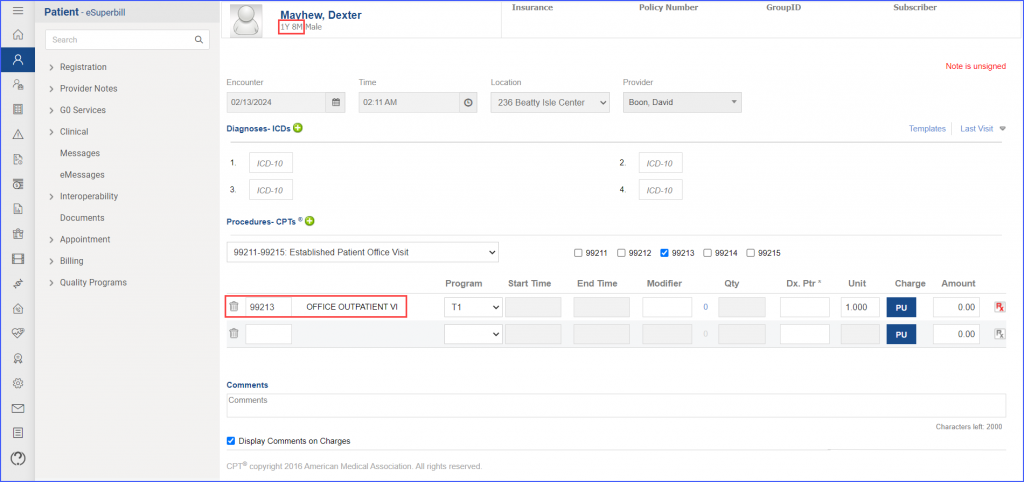 For Numerator:
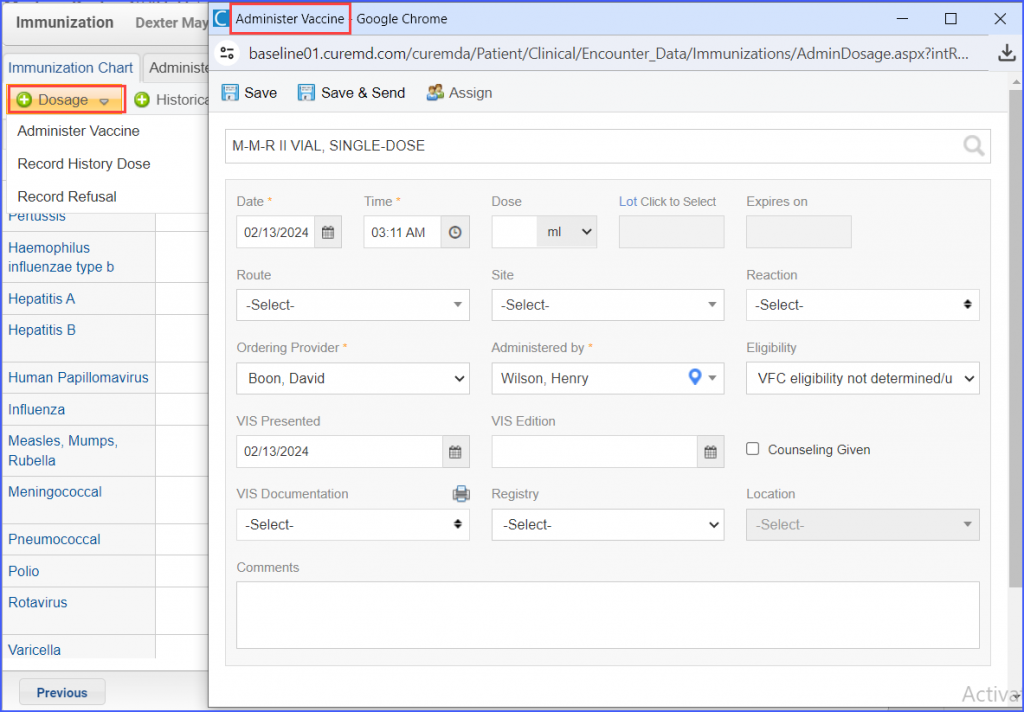
use the workflow Patient > Provider Note > Diagnoses. Click ‘Add’ and search for the relevant diagnosis. Fill out any details as needed and once done, click ‘Save’. Then click ‘Accept’ to add the diagnosis to the provider note. 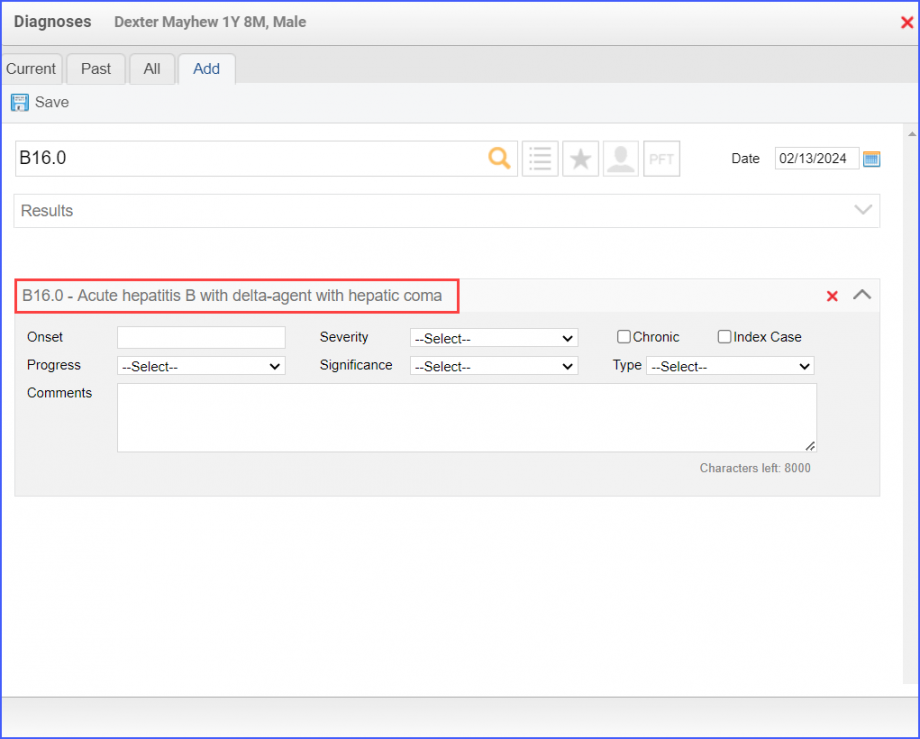 For Denominator Exclusions:
can be documented through Patient > Provider Note > Diagnoses. Click ‘Add’ and search for the relevant diagnosis. Fill out any details as needed and once done, click ‘Save’. Then click ‘Accept’ to add the diagnosis to the provider note. 
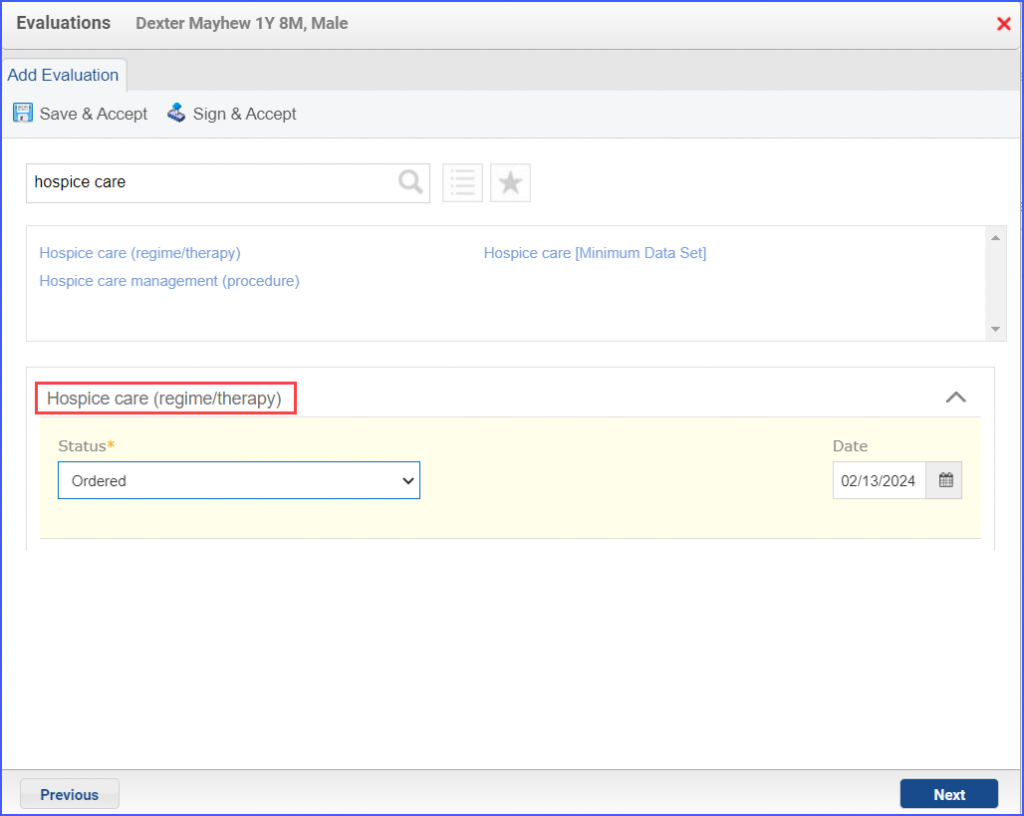

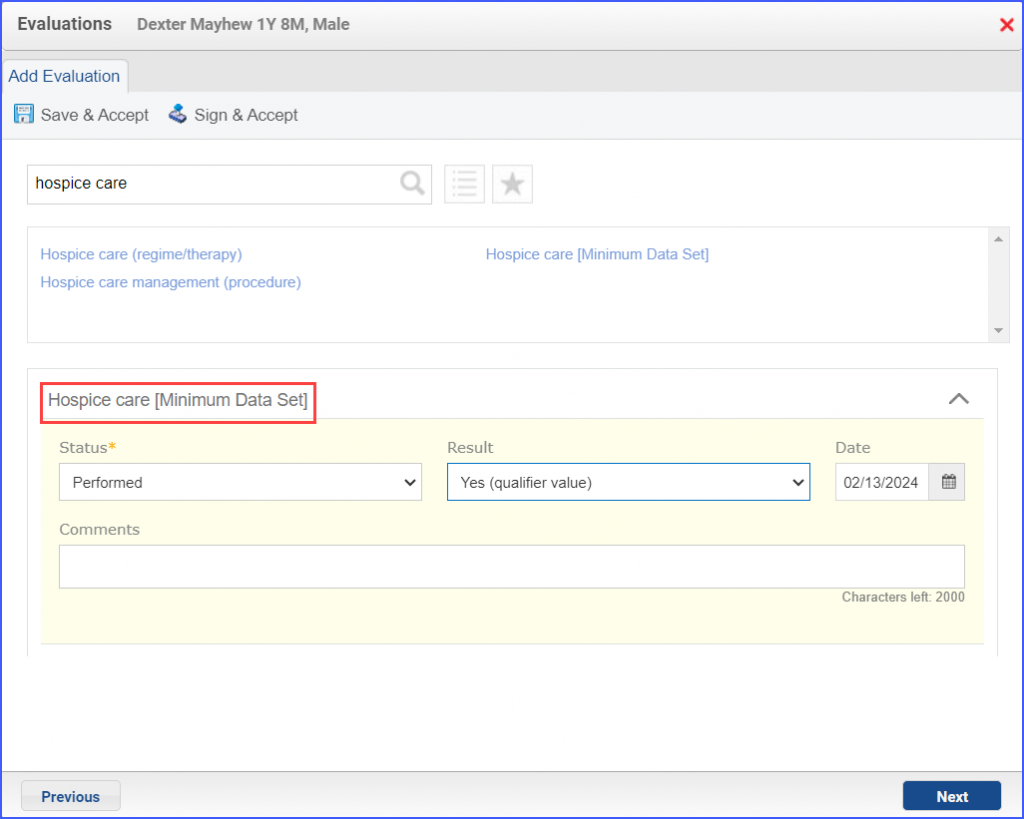
|
||
